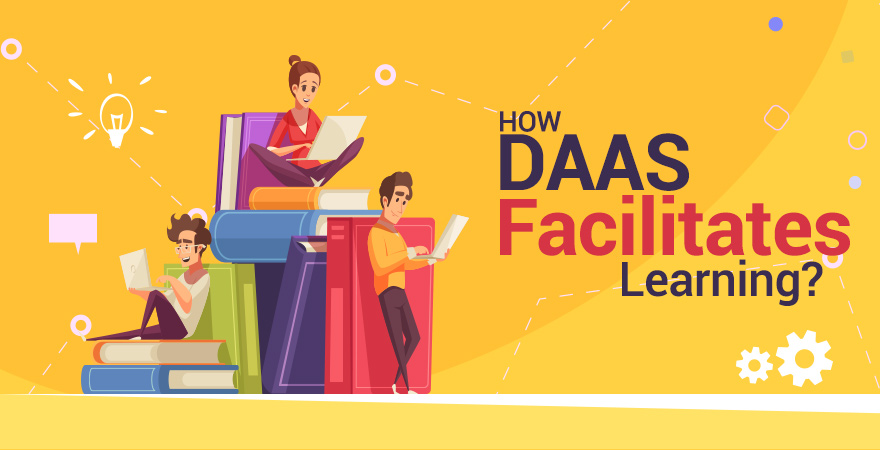Modern cloud computing has fully transformed how educational institutions and organizations go about their daily business. Thanks to the scalability and flexibility of the cloud that our workflow is much more streamlined and efficient.

When we talk of cloud computing technologies, this implies a wide array of services and end user solutions where each serves a different intent. However, Virtual Desktops (VD) can by far be declared as one of the most notable gifts of the cloud.
Related Stuff:
Features of Virtual Desktops (VD)
Unlike physical desktop or laptop PCs, Virtual Desktops are created over a data center using specialized virtualization software. They function and execute work as effectively as your conventional PCs, rather perform even better in most real use cases.
The end user gains access to the VD using a multitude of input devices such as smartphone, tablet, laptop or desktop. However, no work is actually performed over these devices, rather their role is just that of an input device or user interface.
The internet serves as a bridge between the infrastructure housing the Virtual Desktop and its end user. All work is executed by the user over the VD in a similar fashion as a conventional, physical computer.
That’s not all, for more advanced or processing intensive tasks, you can overlay your Virtual Desktop with cloud native applications or software. There are two main models which you can rely upon to run virtual desktops, which are DaaS and VDI.
Also Read:
- How to Make the Most of Virtual Meetings amidst Covid-19?
- Role of Digital Infrastructure in Covid-19 Response
Desktop as a Service – DaaS
In the DaaS model of Virtual Desktop delivery, all the IT infrastructure that supports the VDs is purchased, managed and maintained by a third party Cloud Service Provider (CSP). In return for using the hardware, you pay the CSP a fee that is generally based on usage.
However, you are not the only entity using the infrastructure of a CSP. Large public cloud providers have cloud tenants in the hundreds and thousands, so you may be one of those. This is done to spread the exponentially high upfront costs over more entities.
Perhaps a slight downside of DaaS is that you have to entrust your data to a third party. Still, the cyber security of DaaS providers is very reliable and robust. One more thing to consider in the DaaS model is that there is lesser room for customization.
Also Read:
Virtual Desktop Infrastructure – VDI
The VDI model of Virtual Desktops hinges on setting up a data center on premise and running VDs from that infrastructure. While this deployment model is costly to set up and maintain, it gives your organization full control over its data and way more flexibility.
DaaS or VDI – Which is Better?
Well, there is no definite answer to this question as it will vary with the needs of each organization. Still, if your organization is small to mid sized and does not execute highly complex workloads, your best Virtual Desktop bet is going for the DaaS model.
How DaaS Facilitates Learning?
The DaaS model is ideal for educational institutions that need to support the learning needs of hundreds or thousands of students. In a conventional setup, you need to purchase, configure and update each physical computer for every student.

DaaS solves this bottleneck right from the onset as you just need to allocate virtual desktops to students based on their needs. They will simply login to the assigned VDs using their personal devices such as smartphones, tablets or laptops and get going.
Uninterrupted Learning
In a conventional setting, students can avail modern learning material only while they are on campus and physical access to computer labs is also required. With DaaS, this problem is solved as the learning material can be accessed by students virtually from anywhere.
Processing Intensive Tasks
Some learning disciplines such as graphics, architecture, 3D rendering and the like require a lot of processing power. This is neither available nor affordable for most students and thus, learning suffers. Over DaaS architecture, you have access to nearly limitless processing.
Distance Learning a Reality
The DaaS platform is highly suited for distance learning initiatives. This in turn enables educational institutions to broaden the scope of learning beyond the confines of the campus and make otherwise expensive education much more affordable.
Keeping Educational Content Up to Date
The biggest advantage of DaaS in the field of education is that updating learning content and bringing the same in line with modern trends is a breeze. You just need to update the centralized data center where the learning content is stored.
You don’t need to get the material in millions of textbooks revised every now and then, which carries a huge cost and is a great administrative hassle. Just update the learning content on a single data center and every student will be able to avail that.
Collaborative Learning
It is rightly said that most of the learning actually takes place in a collaborative environment. DaaS is a perfect staging ground for chalking out online groups of teachers and students who can share and exchange new ideas securely in real time.
The immense processing muscle of DaaS can act as an engine for innovations and enhancements in the existing technologies across the spectrum. By the time most pupils graduate, they will actually have hands on experience about their respective fields.
Conclusion
In the fields of education and learning, the true potential of VDI and DaaS is yet to be utilized. DaaS in particular has the potential to transform the entire mechanism of imparting education to one that is effective, efficient, smart and cost effective.
The flagship DaaS offering of dinCloud is a fully virtualized Cloud Hosted Virtual Desktop (dinHVD) that is highly suited to your online education needs. Contact Us to discuss your distance learning needs so that we can craft the optimal DaaS solution for you.


